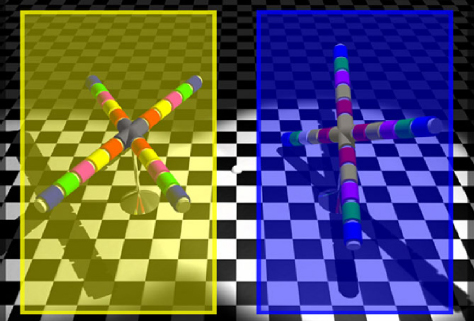GeorgeAB
Supporting Actor
Regarding Colored Lights Behind TVs
Everyone is entitled to their own sense of priorities. Surrounding a TV with colored lights or wall perceptually subtracts that color from the picture in varying degrees. The motion imaging industry is guided by standards and recommended practices in order to preserve artistic intent. It's also designed from the ground up on human visual perception. Video's ultimate goal is consistent, unified program reproduction.
You can see all kinds of deviation from best practices in the consumer space, sometimes even the vendor space. It's extremely rare in the program production/post-production/mastering space. Actually, most of the TV print ads I've been seeing in recent years show flat panel displays on neutral-colored walls and in neutral-colored rooms. More and more residential theaters competing for awards are also using grays and blacks consistently.
I like to think this has become more common due to relentless efforts like mine and others to teach imaging science and display industry standards and best practices. I've been energetically advocating for this type of education for over 20 years. Joe Kane, SMPTE, the Imaging Science Foundation, THX, etc., have been at it longer than I.
Sadly, Philips Electronics undermined these educational efforts regarding video viewing environments with their original "Ambilight" feature on flat TV commercials around the turn of the millennium. Many uninformed TV consumers got the idea having colored lights behind their TV was desirable and "cool." Popularity and validity are not mutually inclusive, neither are marketing and technically correct performance.
This technical article explains why and how these principles are valid. Video market education is a perpetual necessity.
https://cinemaquestinc.com/ive.htm
Best regards and beautiful pictures,
G. Alan Brown, President
CinemaQuest, Inc.
SMPTE, Professional Video Alliance, THX, ISF, Lion AV Consultants
"Advancing the art and science of electronic imaging"
Everyone is entitled to their own sense of priorities. Surrounding a TV with colored lights or wall perceptually subtracts that color from the picture in varying degrees. The motion imaging industry is guided by standards and recommended practices in order to preserve artistic intent. It's also designed from the ground up on human visual perception. Video's ultimate goal is consistent, unified program reproduction.
You can see all kinds of deviation from best practices in the consumer space, sometimes even the vendor space. It's extremely rare in the program production/post-production/mastering space. Actually, most of the TV print ads I've been seeing in recent years show flat panel displays on neutral-colored walls and in neutral-colored rooms. More and more residential theaters competing for awards are also using grays and blacks consistently.
I like to think this has become more common due to relentless efforts like mine and others to teach imaging science and display industry standards and best practices. I've been energetically advocating for this type of education for over 20 years. Joe Kane, SMPTE, the Imaging Science Foundation, THX, etc., have been at it longer than I.
Sadly, Philips Electronics undermined these educational efforts regarding video viewing environments with their original "Ambilight" feature on flat TV commercials around the turn of the millennium. Many uninformed TV consumers got the idea having colored lights behind their TV was desirable and "cool." Popularity and validity are not mutually inclusive, neither are marketing and technically correct performance.
This technical article explains why and how these principles are valid. Video market education is a perpetual necessity.
https://cinemaquestinc.com/ive.htm
Best regards and beautiful pictures,
G. Alan Brown, President
CinemaQuest, Inc.
SMPTE, Professional Video Alliance, THX, ISF, Lion AV Consultants
"Advancing the art and science of electronic imaging"





